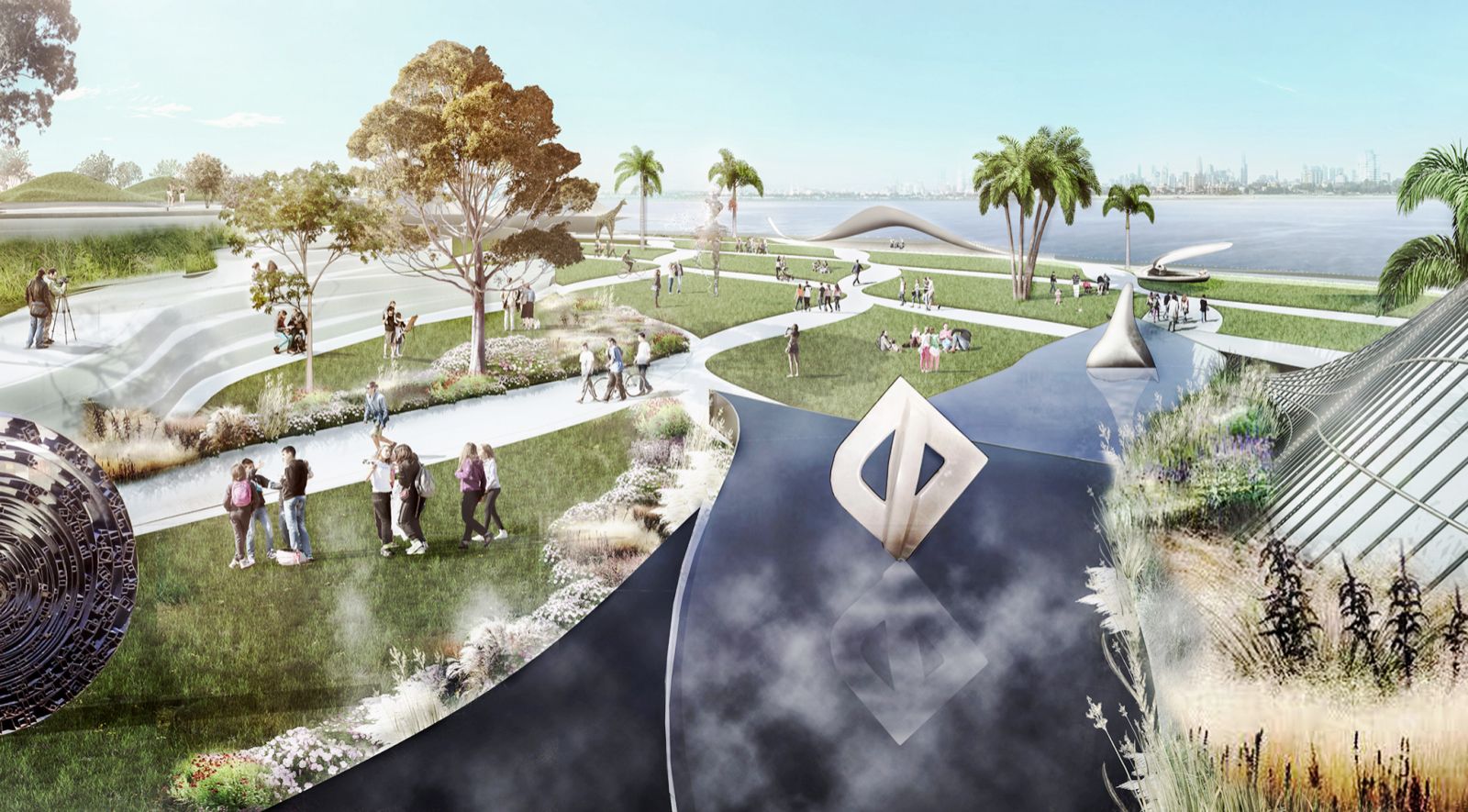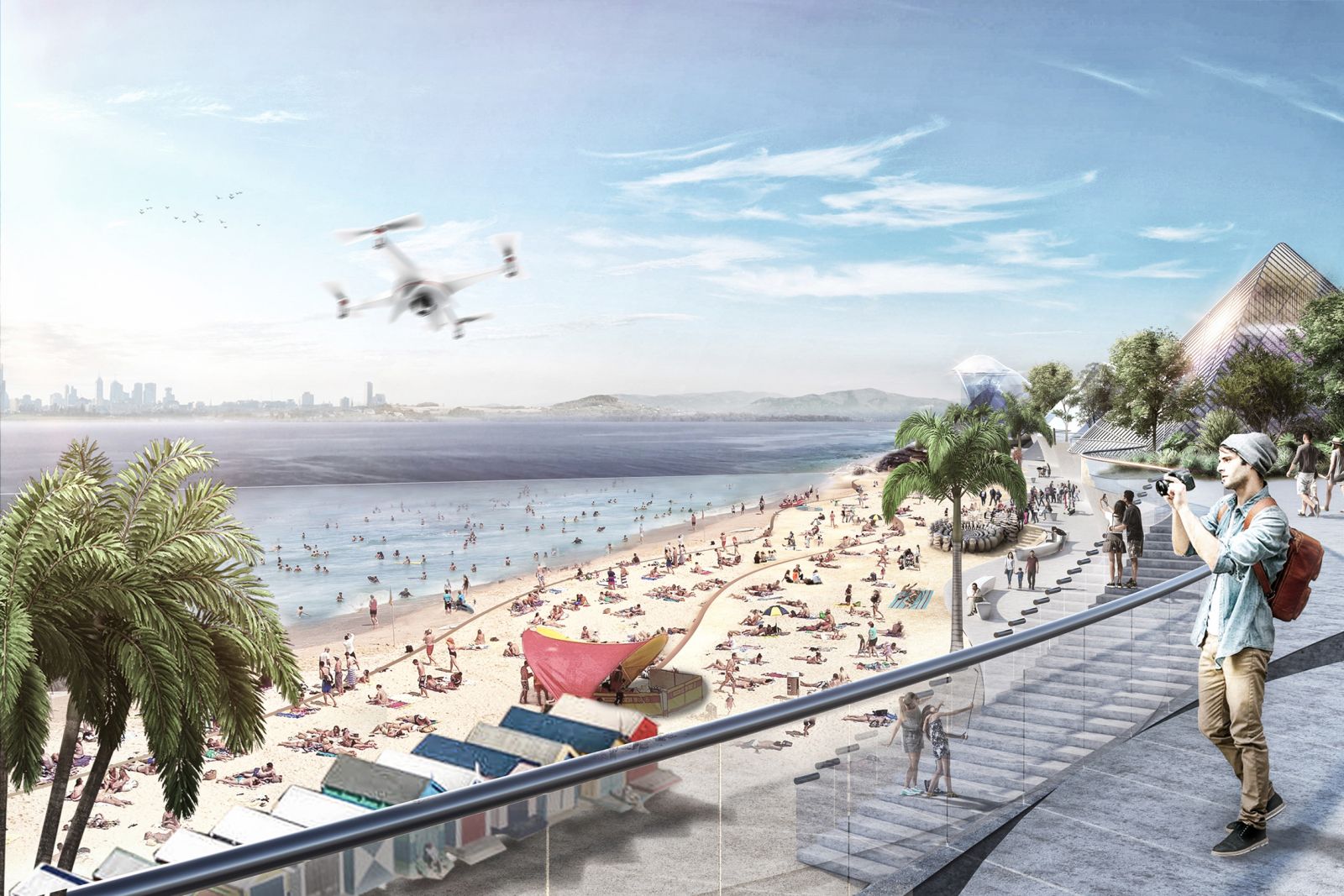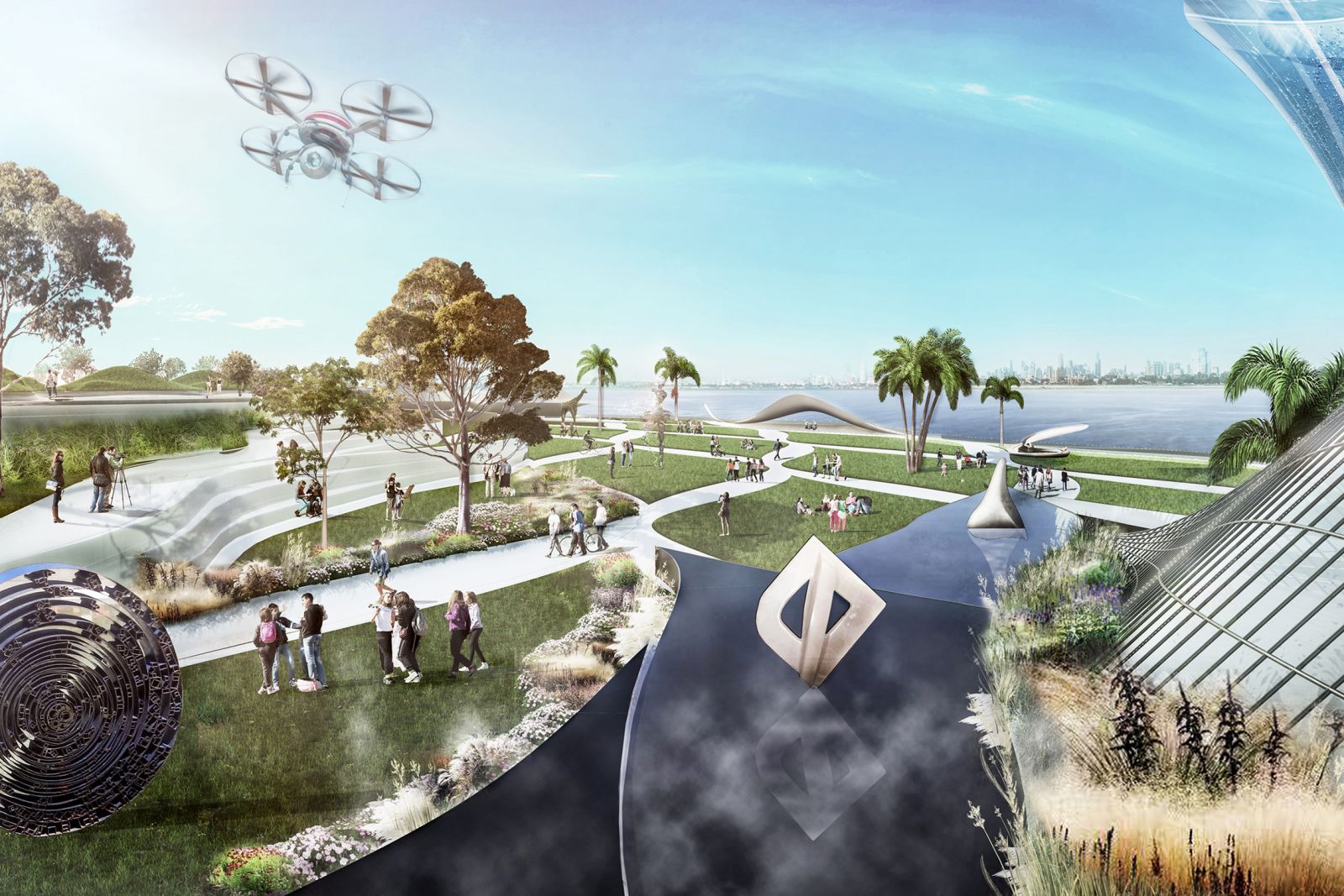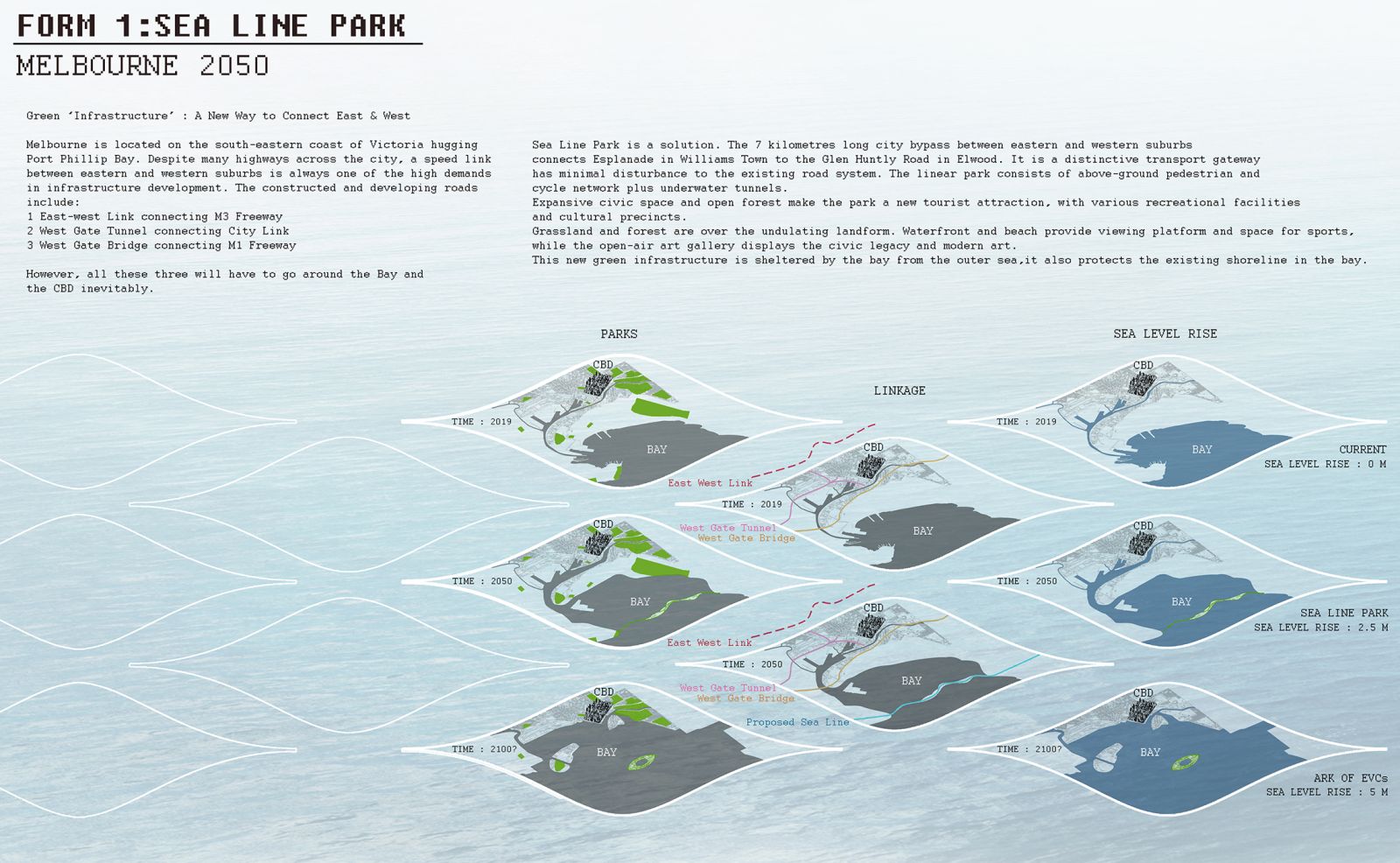Metropolitan Planning Strategy Plan Melbourne 2017-2050 proclaims the current challenges, including population growth, traffic congestion, climate change, city amenity, resources and energy shortage, and more. The competition goal is to imagine what future parks look like under these confronting challenges by 2050 and beyond. Melbourne is located on the south-eastern coast of Victoria hugging Port Phillip Bay.
Despite many highways across the city, a speed link between eastern and western suburbs is in high demand. Sea Line Park is proposed as a solution, which is a 7 kilometres long city bypass, consists of above-ground pedestrian and cycle network plus underwater tunnels. It creates a distinctive transport gateway causes minimal disturbance to the existing road system. Expansive civic space and open forest make the park a great place to be, with assorted recreational facilities and cultural precincts. Open meadow and forest are stringed by undulant landform throughout the linear park.
Protected water edge parkland will become Melbourne’s unique tourist attraction, while the open-air art gallery displays the civic legacy and modern art. Evidence indicates the Norwegian seed vault Svalbard Global Frøhvelv is threatened by the acceleration of global warming. The catastrophic moment of sea-level rise is unlikely foretold. One prediction says the most area of Western Europe will be immersed by 2100, and over 187 million people will be homeless consequently.
More than 66% of the Australian population lives in capital cities along the shoreline, who will face an even more difficult situation in this scenario. Sea Line Park will be an Ark and a floating seed bank that plays a crucial role in preserving vegetation species from 28 Bioregions including hundreds of Victorian Ecological Vegetation Classes, to protect and restore the natural habitats, to maintain and sustain the process of biological evolutionary succession. Sea Line Park is a complex of individual pods with different functions.
Freshwater and clean energy are self-supplied; hence a clean environment and healthy communities are assured. Pods are produced by 3D printing robots collecting ocean plastic waste. The park will grow impeccable as resilient and resistant to natural disasters and climate change. When seawater invades the city, the linear park will be segregated from the land, and reform into an island that can cruise away searching a new docking destination or simply float on the sea.
A self-sustained living hub, carrying natural resources and civilization, is survived in change. This is the Winning entry of “China special award in architecture”, in the International Competition 2019 by the Jacques Rougerie Foundation Space and Sea Generation – Institut de France, in the “Sea Level Rise” category. Source by CX Landscape.
- Location: Melbourne, Australia
- Architect: CX Landscape
- Design Team: George Zhuo, Jing Peng, Simon Zhao, Danniel Dong, Yu Chen
- Year: 2019
- Images: Courtesy of CX Landscape













